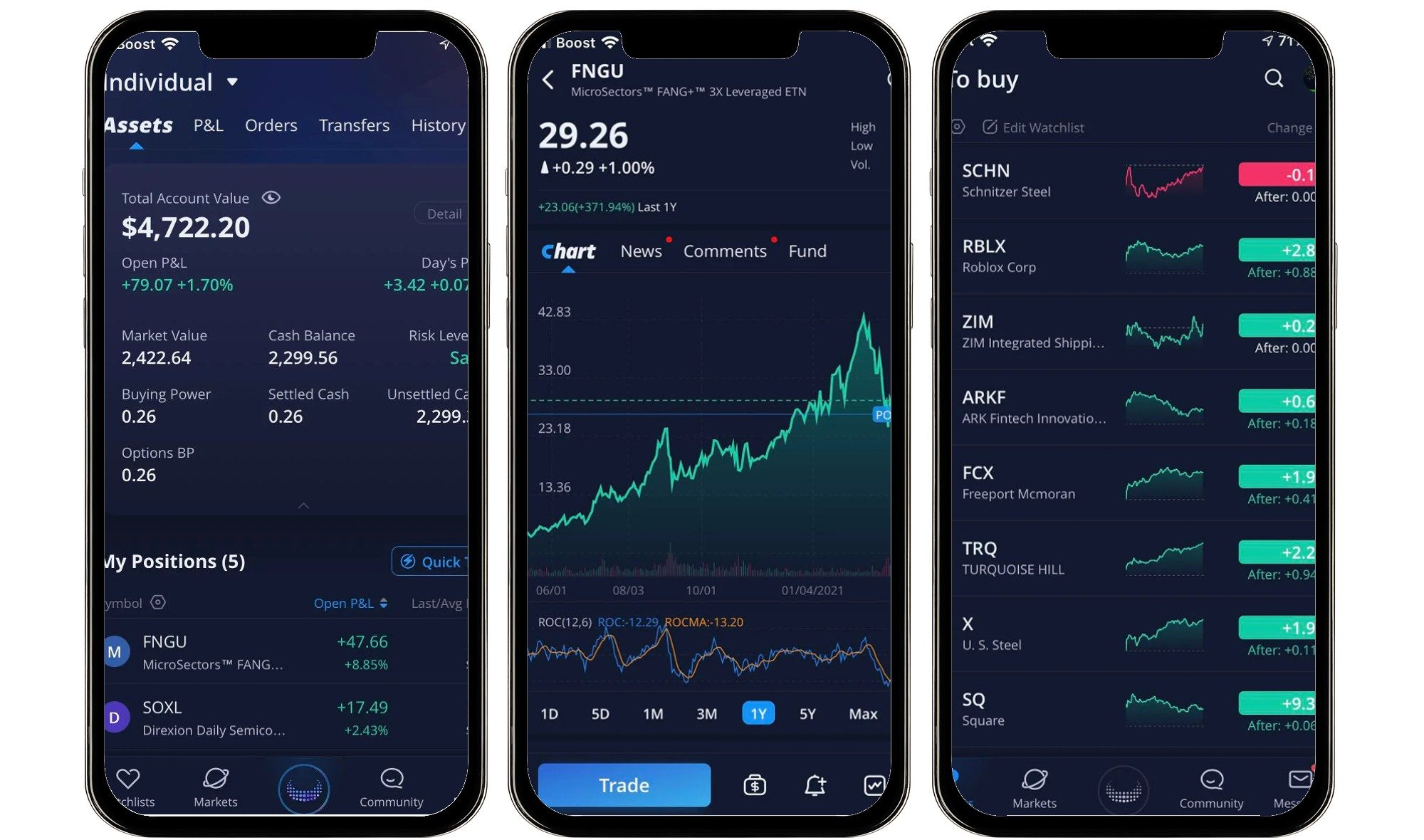

Finance
What Is Free Float In Stocks
Modified: February 21, 2024
Discover the concept of free float in stocks and its significance in the world of finance. Learn how it impacts stock prices and investor decision-making.
(Many of the links in this article redirect to a specific reviewed product. Your purchase of these products through affiliate links helps to generate commission for LiveWell, at no extra cost. Learn more)
Table of Contents
Introduction
When it comes to investing in stocks, understanding the concept of free float is essential. Free float refers to the number of shares available for trading in the public market, excluding shares held by company insiders, controlling shareholders, or other strategic investors. It is a critical metric for investors and analysts to assess the liquidity and valuation of a company’s stock.
Free float plays a crucial role in determining the supply and demand dynamics of a stock. Companies with a higher free float generally have more liquid and actively traded stocks, making it easier for investors to buy or sell shares at their desired price. On the other hand, companies with a lower free float tend to have higher price volatility, as a smaller number of available shares can result in significant price fluctuations.
Calculating the free float involves identifying the shares held by insiders, such as company founders, directors, and major shareholders, and subtracting them from the total number of outstanding shares. The remaining shares are considered the free float and are available for trading on the market.
In this article, we will delve into the definition of free float, explore the calculation methods, and highlight the importance of free float in the stock market. Additionally, we will discuss the factors affecting free float, the advantages of companies with high free float, the disadvantages of companies with low free float, and provide some real-life examples to illustrate the concept’s practical implications.
By gaining a comprehensive understanding of free float, investors can make informed decisions and effectively evaluate the investment potential of a stock. So let’s dive deeper into this crucial concept and explore its significance in the world of finance and investing.
Definition of Free Float
Free float, also known as public float or public equity float, represents the portion of a company’s shares that are available for trading on the open market. It excludes shares held by insiders, such as company founders, directors, and major shareholders. The free float is a critical measure used by investors and analysts to assess the liquidity and valuation of a company’s stock.
In simple terms, the free float is the number of shares that are not locked up or restricted from trading in the public market. It is an important indicator of the supply and demand dynamics of a stock. Companies with a larger free float generally have more liquid stocks, making it easier for investors to buy or sell shares.
The calculation of free float varies from country to country and can be influenced by regulations and market practices. In some markets, such as the United States, the free float is determined by subtracting shares held by insiders, strategic investors, and restricted shares from the total outstanding shares.
For example, consider a company with a total of 10 million outstanding shares. If 2 million shares are held by insiders and another 1 million shares are classified as restricted or locked up, the free float would be calculated as 10 million minus (2 million + 1 million), which equals 7 million shares.
The free float percentage represents the proportion of total outstanding shares that are available for trading. This percentage is often used to compare companies within the same industry or sector. Companies with a higher free float percentage are generally considered more attractive to investors, as they tend to offer greater liquidity and lower price volatility.
It’s worth noting that the concept of free float should not be confused with the term “float” in accounting, which refers to the total number of shares issued by a company that are available to the public.
In summary, free float is the portion of a company’s shares available for trading in the public market, excluding shares held by insiders and restricted shares. Understanding and analyzing the free float is crucial for investors to assess a company’s liquidity, market valuation, and investment potential.
Calculation of Free Float
The calculation of the free float involves determining the number of shares that are available for trading in the public market, excluding shares held by insiders, controlling shareholders, and restricted shares. The specific method of calculating free float can vary across different markets and jurisdictions, but there are some common approaches used by investors and analysts.
One common method to calculate free float is by subtracting the shares held by company insiders, such as founders, directors, and major shareholders, from the total outstanding shares. These insider shares are considered restricted or non-publicly tradable and are not part of the free float.
Another approach is to exclude shares held by strategic or long-term investors who have a significant influence or control over the company’s operations. These strategic holdings are typically classified as non-free float shares, as they are not readily available for trading in the public market.
In addition to insider and strategic holdings, certain shares can also be considered as restricted and excluded from the free float calculation. These may include shares subject to lock-up periods after an initial public offering (IPO), shares held by employee stock ownership plans (ESOPs), or shares held by government entities.
Once the shares held by insiders, strategic investors, and restricted shares are identified and subtracted from the total outstanding shares, the remaining shares are considered the free float. This free float represents the shares that are available for trading on the open market.
For example, suppose a company has a total of 100 million outstanding shares. Out of these, 20 million shares are held by insiders and 10 million shares are classified as restricted due to lock-up periods or other restrictions. In this case, the free float would be calculated as 100 million minus (20 million + 10 million), resulting in a free float of 70 million shares.
It’s important to note that calculating the free float is not always straightforward and can sometimes involve complex analysis of the company’s shareholding structure and regulatory requirements. In some cases, companies may voluntarily disclose the details of their free float in their financial reports or public disclosures.
By understanding how to calculate the free float, investors and analysts can gain insights into the liquidity and tradability of a company’s stock. This information is valuable in evaluating investment opportunities and assessing the potential risks and rewards associated with a particular stock.
Importance of Free Float in Stocks
The concept of free float is of significant importance in the world of stocks and investing. Understanding the free float and its implications is crucial for investors and analysts alike. Here are some key reasons why free float is important in the stock market:
Liquidity and Trading Volume
One of the primary benefits of a higher free float is increased liquidity and trading volume. Companies with a larger free float tend to have more shares available for trading in the public market, making it easier for investors to buy and sell shares. This liquidity is important as it allows investors to enter or exit a position without significantly impacting the stock price, ensuring the efficient functioning of the market.
Price Stability
A higher free float can contribute to price stability in a stock. With a larger number of shares available for trading, the impact of individual trades on the stock price is typically limited. This reduces the likelihood of extreme price fluctuations caused by market orders or large trades, providing a more stable and predictable investing environment.
Valuation and Market Capitalization
The free float plays a crucial role in the valuation of a company and its market capitalization. Market capitalization is calculated by multiplying the current stock price by the total number of outstanding shares. Since the market capitalization represents the total value of a company, excluding shares held by insiders or restricted from trading, a higher free float generally translates into a more accurate representation of the company’s market value.
Investor Perception and Interest
The free float can impact investor perception and interest in a stock. Companies with a higher free float percentage are often seen as more attractive to investors as they offer greater liquidity and ease of trading. Higher investor interest can result in increased trading activity and demand for the stock, potentially driving up the stock price. Additionally, a higher free float can also attract institutional investors who prefer stocks with sufficient liquidity for larger investments.
Market Capitalization Weighted Indices
In stock market indices that are weighted by market capitalization, the free float plays a significant role. Indices such as the S&P 500 or FTSE 100 use market capitalization as a basis for determining the weight of each stock in the index. The free float-adjusted market capitalization is often used, which considers only the shares available for trading. Therefore, the free float affects the representation and influence of a stock in market indices.
Overall, free float is a vital measure that impacts the liquidity, valuation, perception, and trading dynamics of a stock. Investors and analysts should consider the free float percentage when evaluating investment opportunities and understanding the broader market dynamics that can affect a stock’s performance.
Factors Affecting Free Float
Several factors can influence the free float of a company’s stock. Understanding these factors is essential for investors and analysts to assess the liquidity, trading dynamics, and investment potential of a stock. Here are some key factors that can affect the free float:
Insider Holdings and Lock-Up Periods
The level of insider holdings can significantly impact the free float. If insiders, such as founders, directors, or major shareholders, hold a substantial number of shares, it reduces the available shares for trading in the public market. Additionally, lock-up periods associated with IPOs or other share issuances can also limit the free float by restricting the trading of shares for a specific period.
Government Regulations and Shareholding Restrictions
Government regulations and shareholding restrictions can influence the free float of a company’s stock. In some countries, certain industries or sectors may have regulations that limit foreign ownership or require a minimum percentage of shares to be held by local investors. These restrictions can affect the free float and trading availability of a stock.
Strategic or Long-Term Holdings
Strategic or long-term holdings by institutional investors or other entities can impact the free float. If a significant portion of a company’s shares are held by strategic investors, it reduces the number of shares available for trading in the public market. These strategic investors often have long-term investment plans and are less likely to actively trade their shares.
Share Buybacks and Treasury Stock
Share buybacks, where a company repurchases its own shares, can affect the free float. When a company buys back shares and holds them as treasury stock, these shares are considered non-publicly tradable and are excluded from the free float. Share buybacks can reduce the number of available shares and impact the liquidity and trading dynamics of a stock.
Employee Stock Ownership Plans (ESOPs)
Employee stock ownership plans (ESOPs) are often used by companies to incentivize employees by granting them shares of company stock. If a significant number of shares are allocated to ESOPs, it can reduce the free float as these shares are typically not available for trading in the public market. ESOPs can tie up a portion of the company’s shares within the employee base.
Secondary Offerings and Share Issuances
Secondary offerings and subsequent share issuances can impact the free float. When a company issues additional shares through follow-on offerings or private placements, it increases the total number of outstanding shares. If these newly issued shares are freely tradable, they can increase the free float. However, if the shares are subject to lock-up or held by insiders, it might not affect the free float significantly.
By considering these factors, investors and analysts can gain insights into the factors that affect the free float of a company’s stock. Evaluating the free float alongside other fundamental and technical analysis enables a more comprehensive understanding of a stock’s trading dynamics, liquidity, and investment potential.
Advantages of Companies with High Free Float
Companies with a high free float, which represents a larger proportion of shares available for trading in the public market, enjoy several advantages. These advantages can be beneficial for both the company and its investors. Here are some key advantages of companies with high free float:
Liquidity and Trading Volume
Companies with a high free float tend to have more shares available for trading, resulting in increased liquidity and trading volume. This liquidity makes it easier for investors to buy or sell shares without significantly impacting the stock price. Higher trading volume also attracts more market participants, leading to a more efficient and active market for the company’s stock.
Price Stability
A higher free float contributes to greater price stability in a stock. With more shares available for trading, the impact of individual trades on the stock price is typically smaller. This reduces the likelihood of large price fluctuations caused by market orders or block trades, providing a more stable and predictable investing environment for both short-term traders and long-term investors.
Lower Price Impact from Large Trades
In stocks with high free float, large trades or significant buying/selling activities are less likely to have a substantial impact on the stock price. This is because the larger number of available shares absorbs the impact of such trades more effectively. As a result, investors can execute trades at desired prices without causing significant price distortions or slippage.
Broader Investor Participation
Companies with high free float tend to attract a broader range of investors, including institutional investors and mutual funds. Institutional investors generally prefer stocks with sufficient liquidity and trading volume to accommodate their larger investment sizes. The broader investor participation can increase demand for the stock and potentially lead to higher valuations and market interest.
Inclusion in Market Indices
Companies with high free float are more likely to be included in market indices such as the S&P 500 or FTSE 100. The calculation of market indices often considers the free float-adjusted market capitalization, which gives more weight to stocks with higher free float percentages. Inclusion in widely followed market indices can increase a company’s visibility and attract the attention of institutional investors and index funds.
In summary, companies with high free float enjoy numerous advantages, including enhanced liquidity, price stability, lower price impact from large trades, broader investor participation, and potential inclusion in market indices. These advantages contribute to a more active and efficient market for the company’s stock and can increase investor interest and confidence in the company’s growth potential.
Disadvantages of Companies with Low Free Float
Companies with a low free float, which represents a smaller proportion of shares available for trading in the public market, may face several disadvantages. These disadvantages can impact the stock’s liquidity, trading dynamics, and investor perception. Here are some key disadvantages of companies with low free float:
Limited Liquidity
Low free float can result in limited liquidity for the stock. With fewer shares available for trading, it can be challenging for investors to buy or sell shares at their desired prices. This lack of liquidity can lead to wider bid-ask spreads, making it more expensive for investors to execute trades and potentially reducing overall trading activity in the stock.
Higher Price Volatility
Companies with low free float are often more susceptible to price volatility. An imbalance between the buy and sell orders due to limited supply can lead to significant price swings. Even a relatively small buy or sell order can have a more pronounced price impact, resulting in higher volatility and making it more challenging for investors to anticipate and trade the stock effectively.
Difficulty in Raising Capital
Low free float can make it more challenging for a company to raise capital through equity offerings. With a reduced number of freely tradable shares, the ability to issue new shares and attract investment from the public market can be limited. This can restrict the company’s options to fund growth initiatives or undertake strategic acquisitions that require additional capital.
Lower Investor Interest
Companies with low free float may attract lower investor interest compared to companies with higher free float percentages. Limited liquidity and heightened price volatility can deter some investors who prefer more liquid and stable investments. This reduced investor interest may result in lower trading volume, wider bid-ask spreads, and less attention from institutional investors.
Potential Stock Manipulation
Low free float can make a stock vulnerable to price manipulation by individual investors or groups with significant holdings. With a small number of freely tradable shares, it may be easier for large shareholders to influence the stock price through coordinated buying or selling activities. This manipulation can distort the stock’s true value and undermine the confidence of other investors.
While low free float carries these disadvantages, it’s important to note that some investors may perceive it as an opportunity for potential price appreciation and volatility. Additionally, companies with low free float may also benefit from greater control by insiders or major shareholders. Nonetheless, the aforementioned disadvantages should be carefully considered by investors and may impact the overall trading dynamics and investment attractiveness of stocks with low free float.
Examples of Free Float in Stocks
Free float is a concept that can vary across different companies and markets. Here are a few examples of companies with notable free float percentages to illustrate how this metric can impact stock trading:
Company A
Company A is a well-established technology company with a total of 100 million outstanding shares. Out of these, 80 million shares are held by insiders, such as founders and major shareholders. An additional 10 million shares are held by strategic investors. Therefore, the free float of Company A would be calculated as 100 million minus (80 million + 10 million), resulting in a free float of 10 million shares or a 10% free float percentage.
Despite being a highly successful company, Company A has a relatively low free float, which can lead to limited liquidity and potentially higher price volatility. Investors looking to trade this stock may face challenges due to the restricted availability of shares for trading in the public market.
Company B
Company B is a newly listed start-up in the healthcare sector. It has a total of 50 million outstanding shares, and after carefully structuring its initial public offering (IPO), it has ensured a high free float percentage. Only 5 million shares are held by insiders and strategic investors, leaving a free float of 45 million shares or a 90% free float percentage.
With a substantial free float, Company B offers greater liquidity, lower price volatility, and a larger pool of shares available for trading. This can attract more investor interest and potentially result in a more efficient market for the stock.
Company C
Company C is a large multinational corporation in the energy sector. It has a total of 200 million outstanding shares. The company has implemented an employee stock ownership plan (ESOP), with 50 million shares allocated to employees. Additionally, company insiders hold 40 million shares, leaving a free float of 110 million shares or a 55% free float percentage.
Although Company C has a relatively moderate free float, it is still considered significant, ensuring relatively good liquidity and investor interest. However, the presence of the ESOP and significant insider holdings may lead to some trading restrictions and potentially impact the stock’s price dynamics.
These examples demonstrate how different companies can have varying free float percentages, resulting in differences in liquidity, trading dynamics, and investor interest. It is important for investors and analysts to consider the free float when evaluating potential investments and understanding the impact it can have on a stock’s trading environment.
Conclusion
Understanding the concept of free float is essential for investors and analysts navigating the world of stocks and investments. Free float, representing the number of shares available for trading in the public market, plays a crucial role in assessing a company’s liquidity, valuation, and investor interest.
The calculation of free float involves excluding shares held by insiders, controlling shareholders, and other restricted shares from the total outstanding shares. This calculation helps determine the portion of shares that are freely tradable and contribute to the stock’s liquidity.
Companies with a high free float enjoy advantages such as increased liquidity, price stability, lower price impact from large trades, broader investor participation, and potential inclusion in market indices. On the other hand, companies with a low free float face disadvantages such as limited liquidity, higher price volatility, difficulty in raising capital, lower investor interest, and potential stock manipulation.
Factors influencing the free float include insider holdings, lock-up periods, government regulations, strategic or long-term holdings, share buybacks, ESOPs, and share issuances. Understanding these factors is crucial for assessing a stock’s trading dynamics and investment potential.
Real-life examples demonstrate how different companies can have varying free float percentages, resulting in differences in liquidity, trading dynamics, and investor interest. Considering the free float alongside other fundamental and technical analysis helps investors evaluate investment opportunities and understand the broader market dynamics.
In conclusion, free float is a critical metric that impacts the liquidity, valuation, and trading dynamics of a company’s stock. By understanding and analyzing the free float, investors can make informed decisions, navigate the market effectively, and evaluate the potential risks and rewards associated with a particular stock.














